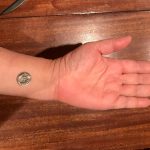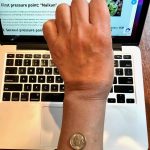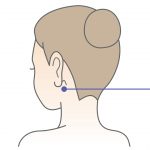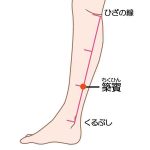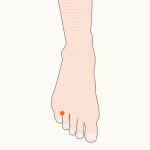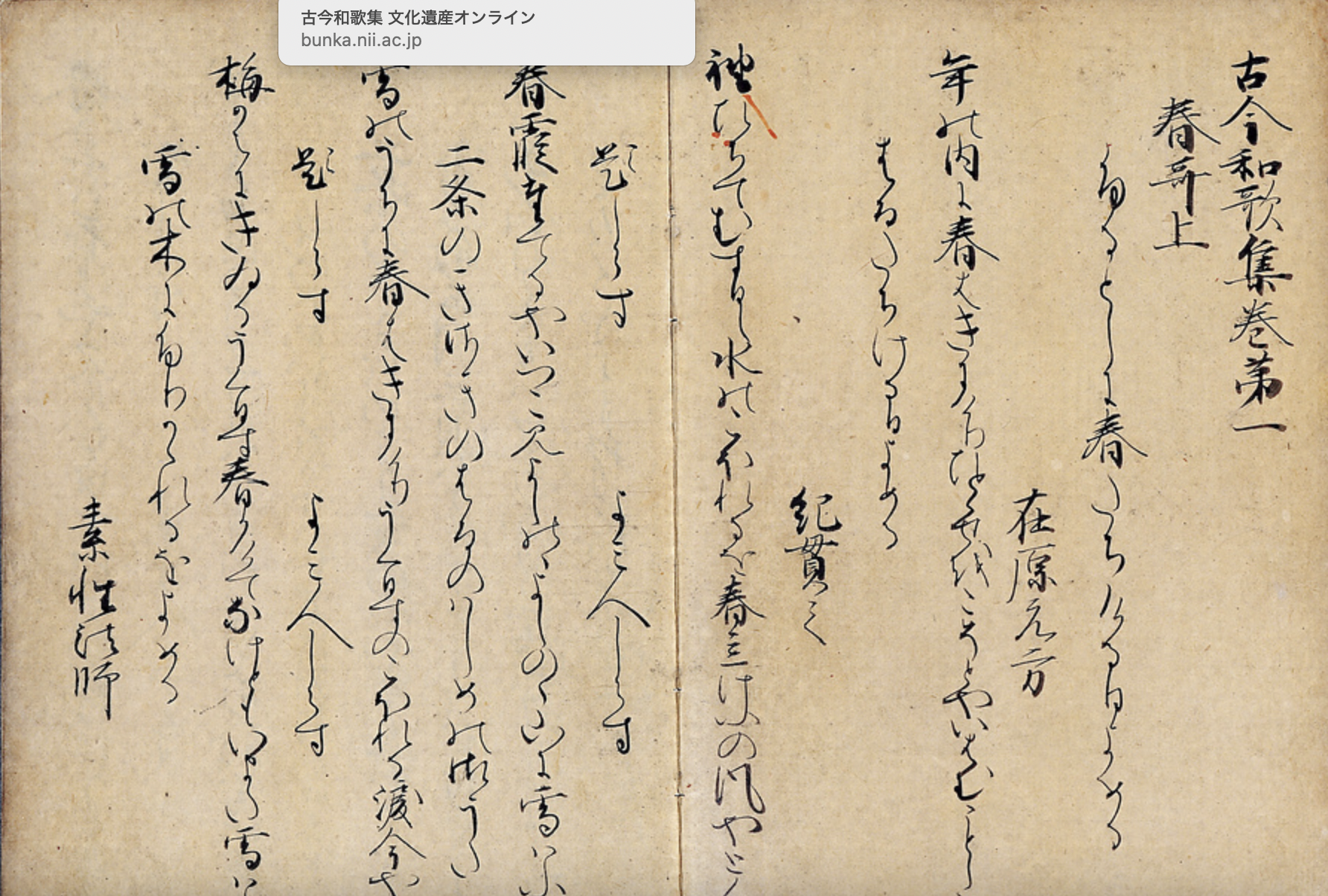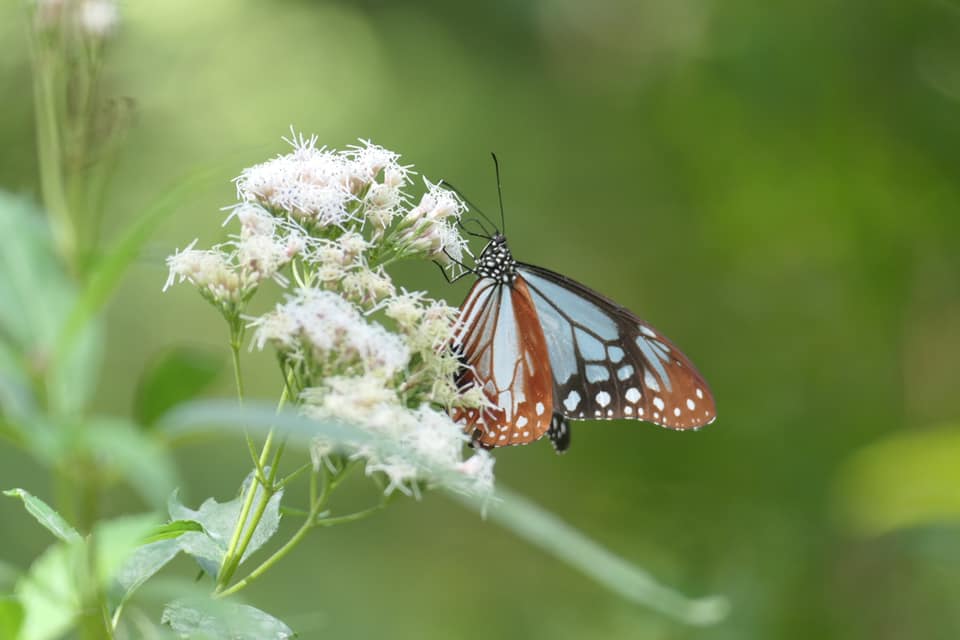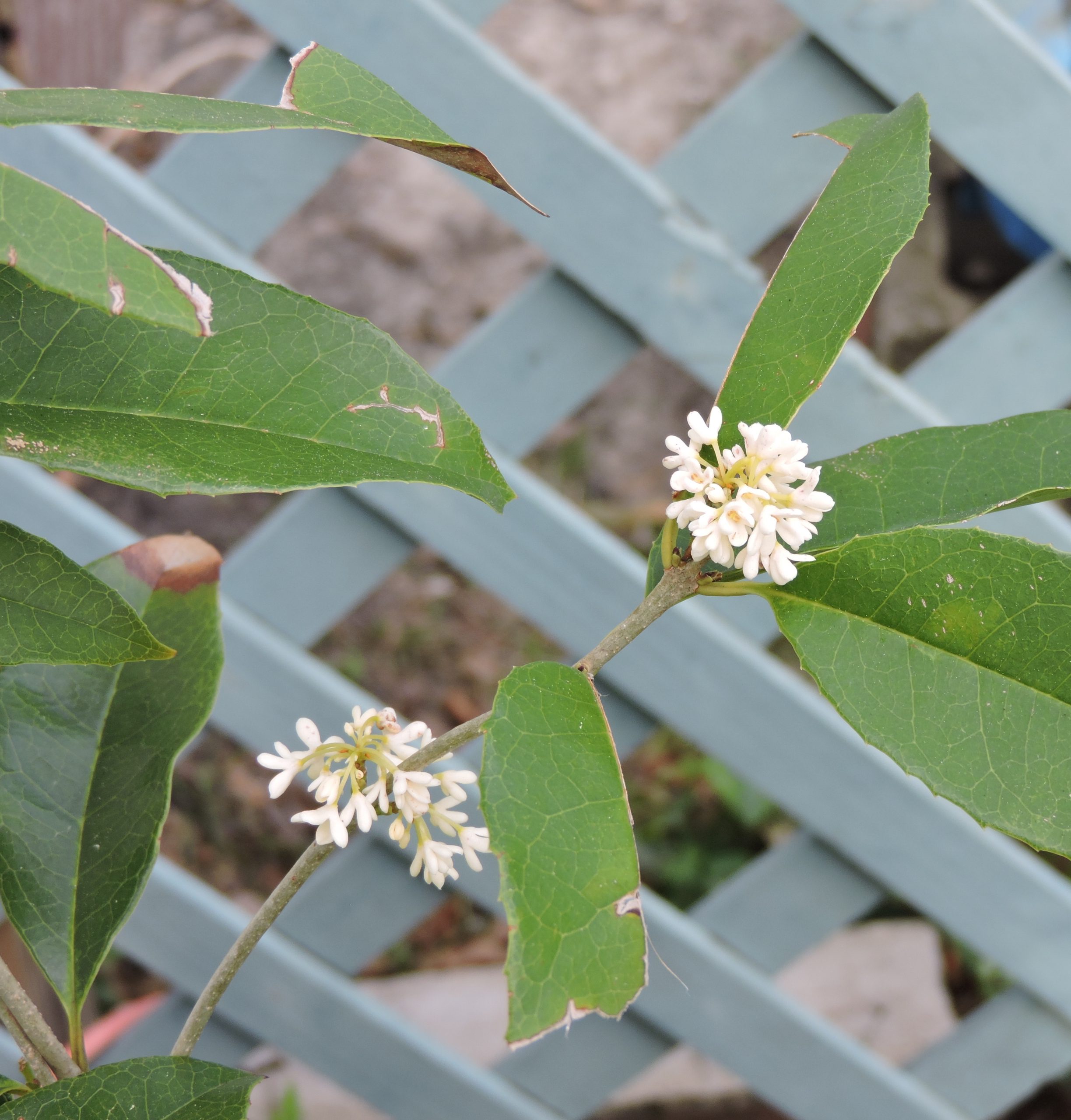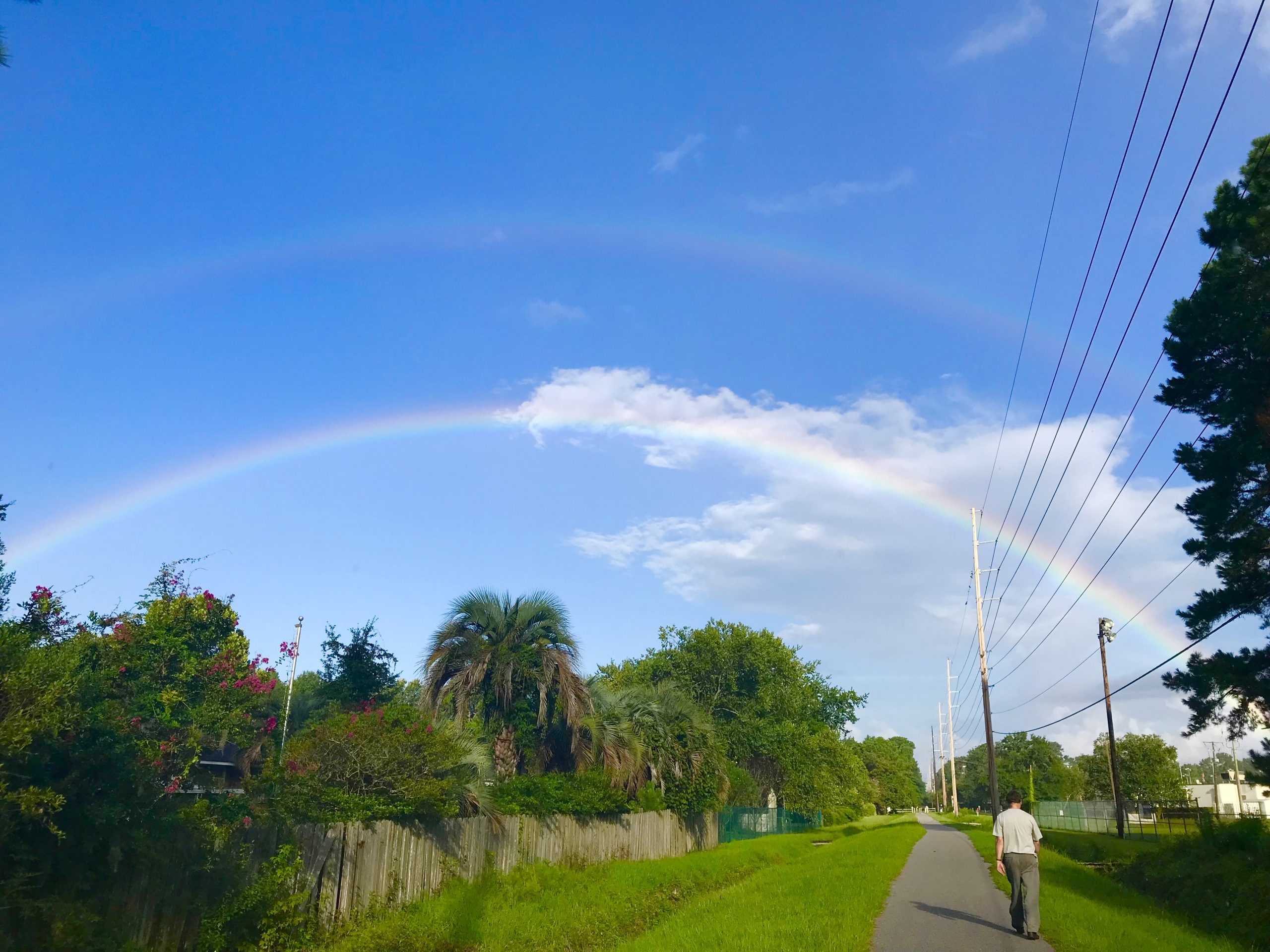ルビつき和訳は英文の下にございます。/ The Japanese translation is below the English text and fully rubied.
FINGER NAMES
Contents 1. Have you been car-sick? 2. First pressure point for motion sickness: “Naikan” 3. Second pressure point: “Gaikan” 4. Third pressure point: “Eihu” 5. Fourth pressure point: “Chikuhin” 6. Fifth pressure point: “Kyokei” 7. Finger names 8. The ring finger and the little finger 9. Toe names 10. Did my self-finger pressure therapy work?
1. Have you been car-sick?
Have you ever been car-sick?
I wasn’t for a long time, but recently I began to take driving lessons.
One day, I came home from a lesson and began to prepare for the Japanese lesson. I was going to meet a student in 30 minutes.
I suddenly felt light-headed and sick. Two hours of a tense driving lesson made me car-sick, I thought.
I would be better with time but I wanted to feel better. Drinking a large glass of water, I made a quick search on the Internet.
On the website of a Japanese pharmaceutical company, I found this: “Press these pressure points to prevent or alleviate your motion sickness”.
I needed to do something, so I followed the instruction as best as I could, and actually I felt better!
In the following, I would like to share the information with you.
2. First pressure point for motion sickness: “Naikan”
Press ”Naikan” with your thumb or a fingertip, and it helps you to restore your sense of equilibrium. They say it alleviates your sick feeling in the stomach, nausea, car-sickness, and also a hang-over.
- How to find it: Hold your hand upward, and measure with your finger width from the crease on your wrist. Move your finger three finger-widths toward your elbow. The pressure point is there in the middle of your arm.
3. Second pressure point: “Gaikan”
Press this point, it helps you to promote your sympathetic nerve system. They say it is also effective to recover from fatigue and headache.
- How to find it: Hold your hand downward, and measure with your finger width from the crease on your wrist. Move your finger three finger-widths toward your elbow. The pressure point is there in the middle of your arm, it is located exactly on the opposite side of the arm from the Naikan point.
4. Third pressure point: “Eihu”
They say that this pressure point is related to the sense of equilibrium in your internal ear and that pressing it helps prevent car-sickness.
- How to find it: It is on the back of your earlobe. There is a “hollow” between the back of your earlobe and a protruding little bone, and that’s the point.
5. Fourth pressure point: “Chikuhin”
If you press this point, it alleviates your car-sickness.
- How to find it: It is on your lower leg. Up from your inner ankle, measure with your finger five finger-width toward your knee. The point is in the middle of your inner calf.
6. Fifth pressure point: “Kyokei”
Press this point, and it works on your dizziness, headache, and ear-ringing. They say it has an instant effect on your car-sickness, too.
- How to find it: Find a depression between your fourth toe and the little toe. It is not in the middle but on the side of the fourth toe. That is the point.
For your information, these pressure point names originated in China, and so we don’t use them in everyday life. We can only guess the meaning of each from the Chinese characters.
7. Finger names
As I followed the instruction, I found something interesting about the toe names.
But before the toe, let us go over the finger names.
The Japanese word for the thumb is “oya-yubi”, meaning parent finger. Its image is the short and burly father.
Next, the index finger is “hito-sashi-yubi”, meaning person-pointing finger. Its image is the tall and efficient mother.
The middle finger is “naka-yubi”, meaning just middle finger.
8. The ring finger and the little finger
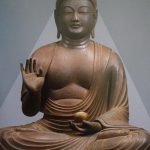
Our favorite is the ring finger because of the etymology. It is called “kusuri-yubi”, meaning the medicine finger. A popular opinion on its etymology is the historic use of this finger for preparing, mixing, and applying ointment.
There is another theory, though, which may have resulted from the first opinion or which actually derived it. It says the sign “Yakushi Nyorai (Bhaisajaguru)” makes with its right hand is the origin of the word “kusuri-yubi”. Also called Buddha of Healing, Yakushi Nyorai is believed to save us from diseases, worries and anguish (It has an image like a very sweet, omnipotent doctor). In Japan, its statue typically opens and shows its right hand to the front, and holds a medicine pot in its left hand. Often its right ring finger bends slightly as if it is going to apply some holy medicine to us.
Lastly, the small finger is “ko-yubi”, meaning child finger. Its image is a baby.
9. Toe names
In Japanese, names of the fingers of the hand are also used for the toes as toe names. Everyone uses those toe names carelessly, but if you stop and think, some sound funny because they don’t make sense.
It’s fine to call your big toe “ashi no oya-yubi (parent finger on the foot)”.
However, do you ever use your second toe to point at people? So, calling it “ashi no hito-sashi yubi (person-pointing finger on the foot)” is a little awkward.
The third toe is called “naka-yubi” (middle finger) and it works.
Now, it would be very difficult to apply ointment with your fourth toe. Still we call it “ashi no kusuri-yubi (medicine finger on the foot)” without any concern. For example, in the website of the pharmaceutical company we referred to, they tell you to press the point on your foot between “your kusuri-yubi and ko-yubi”. That is the only way to specify the toes.
The small toe is fine being called “ashi no ko-yubi (child finger on the foot)”.
10. Did my self-finger pressure therapy work?
When I got sick after the driving lesson, I hurried to make a search, read the webpages, identified and pressed all the mentioned pressure points very hard. By the time I saw my student, I had totally forgotten I was sick.
Maybe my sickness was just gone while I was concentrating on something else, not brooding on my discomfort. Or maybe my self-finger pressure therapy actually worked.
Anyway, I will try it again next time I get car-sick. I think it is nice of the pharmaceutical company to make that information available on the Internet while selling their medicine for motion sickness.
[End of the English post]
指の名前
目次 1.車に酔ったこと、ありますか? 2.酔い止めのツボその一「内関」 3.二番目のツボ「外関」 4.三番目のツボ「翳風」 5.四番目のツボ「築賓」 6.五番目のツボ「侠谿」 7.指の名前 8.薬指と小指 9.足指の名前
1. 車に酔ったこと、ありますか?
車に酔ったこと、ありますか?
私は長い間酔ったことがなかったのですが、最近、自動車運転の路上レッスンを受け始めまして。
ある日、レッスンから帰ってきて日本語のレッスンの支度を始めました。あと30分で生徒さんと会わなければなりません。
ところが、急に頭がくらくらして、気持ち悪くなりました。緊張して2時間運転していたので車に酔ったのです。
時間が経てばよくなるのはわかっているけれど、なんとか調子を整えたい。水をがぶがぶ飲みながら急いでインターネットを探すと、ある日本の製薬会社のウエブサイトに、「ツボ押しが乗り物酔いに効きます」と書いてありました。
何でもいいからすぐ必要だったので、書かれている通りにやってみました。そうしたら本当に気分がよくなったのです!
以下、ここで知ったことを、皆さまとシェアしたいと思います。
2. 酔い止めのツボその一「内関」
ここを押すと、平衡感覚が正常に戻ります。胃の不快感、吐き気、乗り物酔い、二日酔いにも効くそうです。
- 内関の見つけ方:手のひらを上に向けてください。内関は、手と手首の境目にあるしわの真ん中から指三本分ひじの方へ進んだところにあります。腕の内側の真ん中です。
3. 二番目のツボ「外関」
ここを押すと、自律神経が整い、疲労回復や頭痛にも効きます。
- 外関の見つけ方:手のひらを下に向けてください。外関は、手の甲と手首の境目にあるしわの真ん中から指三本分ひじの方へ進んだところにあります。内関のちょうど反対側です。
4. 三番目のツボ「翳風」
このツボは内耳の平衡感覚につながり、乗り物酔いに効くそうです。
- 翳風の見つけ方:耳たぶの裏にあります。耳たぶと骨の出っ張ったところの間のくぼみが翳風です。
5. 四番目のツボ「築賓」
ここを押すと、乗り物酔いが和らぎます。
- 築賓の見つけ方:足の下の方を見てください。内側のくるぶしから、指の幅5本分膝の方へ進んだところ、ふくらはぎの真ん中にあります。
6. 五番目のツボ「侠谿」
ここを押すとめまい、頭痛、耳鳴りなどに効き、乗り物酔いにもすぐ作用するそうです。
- 侠谿の見つけ方:足の薬指と小指の付け根の間にあります。真ん中ではなく、薬指寄りのへこんだ部分です。
なお、これらツボの名前は全て中国から伝わったもので、日本語では普通使わない言葉ばかりです。意味は、漢字によってはわかるような気もします。
7. 指の名前
説明を見ながらツボを押していて、足指の名前について面白いことに気づきました。
足の話の前にまず、手の指の名前を確認しておきましょう。
英語のthumb (サム) は日本語で親指といいます。背が低めでがっしりしているお父さんのイメージです。
次に、index finger (インデックス・フィンガー) は人差し指といいます。人を指すのに使う指という意味です。なんでもできるお母さんのイメージです。
Middle finger (ミドル・フィンガー) は中指といいます。
8. 薬指と小指
四番目の指、ring finger (リング・フィンガー) は、薬指といいます。この名前の由来は興味深い。塗り薬を混ぜ合わせて作ったり、患部に塗ったりするのに使う指だったからというのです。
なお、この説の結果か、その元になっていたのかわかりませんが、薬師如来像の印相が「薬指」の語源だという説もあります。薬師如来は私たちを病や悩みから救ってくれる仏様(とても優しいお医者様のようなイメージ)で、その像は日本では右手のひらを前へ向け、左手のひらで薬壺を持っています。そして、その右手は第四指をほんの少し曲げていることが多く、霊薬を付けてくださろうとしている感じなのです。
最後に、small finger (スモール・フィンガー) は小指です。赤ちゃんのイメージです。
9. 足指の名前
さて、日本語では、手の指の名前がそのまま足指にも使われます。みんな何気なく使っていますが、ちょっと考えてみると、意味をなさないものもあります。
英語でbig toe (ビッグ・トウ) という足の第一指は日本語で「足の親指」といいますが、これはわかります。
次に、足の第二指を「足の人差し指」と呼びます。でも、二番目の足指で人を指し示すことができますか? 普通はできないので、「足の人差し指」と呼ぶのはちょっと変です。
真ん中の指は「足の中指」です。これはいいとして。
足の第四指を「足の薬指」というのはどう考えてもおかしいのです。四番目の足指で塗り薬を混ぜ合わせたり付けたりはまずできないから。でも例えば、今回参考にした製薬会社のサイトで、足のツボの場所を説明するのに「薬指と小指の間」と言っています。他に言い方がないのです。
いちばん小さい足指は「足の小指」ですが、これにも違和感はありません。
10. セルフ指圧は効いたのか?
私が運転練習で車に酔った時、大急ぎで応急措置を検索して、ウエブサイトを読んで、メモを取って、ツボを全部探し出して、一つずつ強く押して様子をみました。あれやこれやで忙しく、生徒さんに会った時には気持ちが悪かったことはすっかり忘れていました。
たぶん、気分が悪いといって沈んでいないで、他のことに集中していたので、悪い気分がどこかへ行ってしまったのかもしれません。あるいは、私のセルフ指圧が実際に効いたのかもしれません。
ともかく、次回運転で酔ったらまたやるつもりです。この製薬会社は酔い止め薬の会社らしいのですが、この情報をインターネットに出してくれて親切だと思いました。
[和文終わり]
